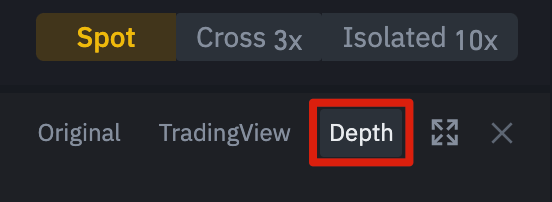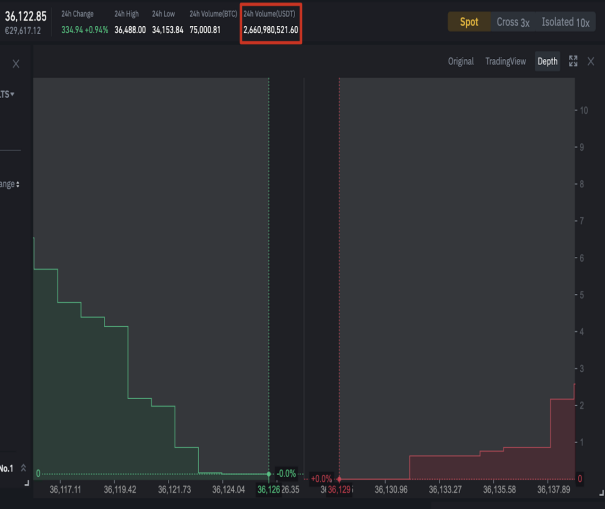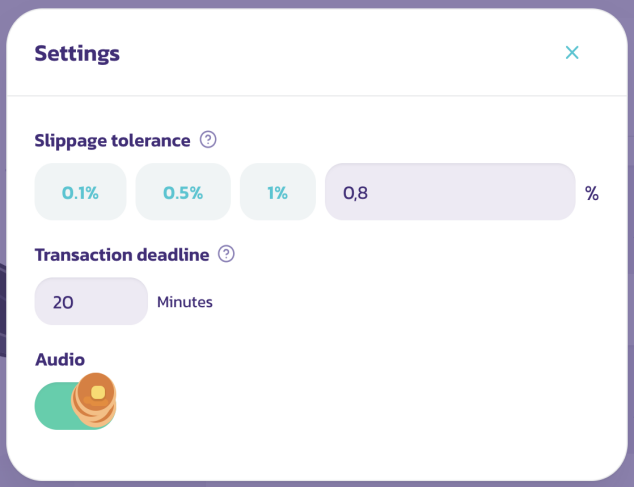Detailed Explanation of Bid-ask Spread and Slippage
The bid-ask spread is the difference between the lowest asking price and the highest bid price of an asset. Assets like Bitcoin typically have smaller spreads than assets with less liquidity and volume.
Slippage occurs when the average price at which a trade settles differs from the initial request. Slippage usually occurs when executing a market order. If liquidity is insufficient to support the order or there is volatility in the market, the final order price may change. To combat slippage on low-liquidity assets, try splitting your order into several smaller orders.
Introduction
When buying and selling assets on a cryptocurrency exchange, the market price is directly affected by supply and demand. In addition to price, important factors to consider are volume, market liquidity, and order type. Depending on market conditions and the type of order selected, a trade may not be executed at the desired price.
As buyers and sellers negotiate, a price difference (i.e., bid-ask spread) is created. Depending on the volume and volatility of the asset, slippage may also occur (more on this later). To avoid surprises, it helps to know the basics of the exchange’s order book.
What is the bid-ask spread?
The bid-ask spread is the difference between the highest bid and the lowest ask in the order book. In traditional markets, spreads are usually caused by market makers, brokers or liquidity providers. In the cryptocurrency market, spreads are the result of the difference between the limit orders of buyers and sellers.
If the buyer wants to buy immediately at the market price, he will accept the seller’s lowest ask price. Conversely, if the seller wants to sell immediately, he will also accept the buyer’s highest bid. Liquid assets (such as foreign exchange) have relatively low bid-ask spreads, and buyers and sellers can execute orders without causing large changes in the asset price. The reason behind this is that there are a large number of orders in the order book. When these large orders are closed, the bid-ask spread will increase, causing large price fluctuations.
Market makers and bid-ask spreads
“Liquidity” is an important concept in financial markets. If you want to try to trade in a low-liquidity market, you may have to wait for hours or even days for your order to be matched with other traders.
Activating market liquidity is very important, but some markets cannot obtain sufficient liquidity by retail investors alone. For example: in traditional markets, brokers and market makers can earn arbitrage profits by providing liquidity.
Market makers can manipulate the bid-ask spread simply by buying and selling the same asset. By selling high and buying low, and repeating this cycle, market makers can use the spread to arbitrage. Even with a small spread, large volumes of trading can generate significant returns around the clock. High-demand assets have smaller spreads because market makers compete to narrow the spread.
Depth Charts and Bid-Ask Spreads
Let’s look at some real-world examples of cryptocurrencies to explore the relationship between volume, liquidity, and bid-ask spreads. You can easily view the bid-ask spread by opening the trading platform’s user interface and switching to the [Depth] chart view. The button is located in the upper right corner of the chart area.

Under the [Depth] option, the asset’s order book is displayed graphically. Green shows the bid quantity and bid price, while red shows the ask quantity and ask price. The difference between the red and green areas is the bid-ask spread, which can be calculated by subtracting the green bid price from the red ask price.

As mentioned above, there is an implicit correlation between liquidity and a low bid-ask spread. Volume is a common indicator of liquidity, and the larger the volume, the smaller the bid-ask spread as a percentage of the asset’s price. Trading larger cryptocurrencies, stocks, and other assets faces competition from traders looking to profit from the bid-ask spread.
Bid-ask spread ratio
To compare the bid-ask spreads of different cryptocurrencies or assets, it is more intuitive to evaluate them in the form of a ratio. The calculation is very simple:
(Ask price — Offer price) / Ask price x 100 = Bid-ask spread ratio

We can also draw some conclusions from the low spread of Bitcoin. Assets with low bid-ask spread ratios are likely to have high liquidity. If you want to fill a large market order at this moment, the risk of the order price not meeting your expectations is usually smaller.
What is slippage?
Slippage is usually a product of volatile markets or poor liquidity. Slippage occurs when a trade cannot be settled at the expected or desired price.
For example: suppose you want to place a high market buy order at a price of $100, but the market is not liquid enough to fill it at this price. As a result, you can only accept later orders (with a price higher than $100) until they are finally filled. In this way, your average purchase price will exceed $100, resulting in the so-called “slippage”.
In other words, when a user creates a market order, the exchange automatically matches the buy and sell actions with the limit orders in the order book. The order book matches the user with the best price, and if there is insufficient volume corresponding to the target price, the order will continue to match the higher price in the order chain. This will cause the user’s order to not be executed in the market at the expected price.
In the field of cryptocurrency, slippage is often seen in the mode of automated market makers and decentralized exchanges. For altcoins with high volatility or poor liquidity, the slippage may exceed the expected price by 10%.
Positive Slippage
Slippage does not mean that the final transaction price will be worse than expected. Positive slippage occurs if the price drops when you place a buy order, or the price rises when you place a sell order. Although positive slippage is uncommon, it can occasionally occur in volatile markets.
Slippage Tolerance
Some exchanges allow you to manually set the slippage tolerance level to limit the potential slippage. Automated market makers generally have this option, such as PancakeSwap and Ethereum’s Uniswap.

The amount of the slippage affects the settlement time of the order. If the slippage is set too low, the order may take a long time to be executed, or it may not be executed at all. If it is set too high, the order will remain in a pending state and be preempted by other traders or robots.
In this case, other traders can preempt the transaction and buy the asset first by simply increasing the gas fee. After that, the preemptive trader will refer to the slippage tolerance and establish another transaction at the highest expected price of the tolerance setter to sell the asset back to the setter himself.
Try to avoid negative slippage
Slippage is difficult to avoid, but the impact can still be minimized through some trading strategies.
1. Try to “break up” large orders into small pieces. Keep a close eye on the order book and then post orders in a dispersed manner to ensure that the total order amount does not exceed the market trading volume.
2. If using a decentralized exchange platform, don’t forget to consider the transaction fee factor. To prevent slippage, some networks will charge high fees based on blockchain traffic, causing all gains to go down the drain.
3. If you are dealing with low liquidity assets (such as small liquidity pools), trading activity will have a significant impact on asset prices. The slippage of a single transaction may be small, but a large number of small slippages will also affect the price of subsequent block transactions.
4. Use limit orders. Limit orders allow transactions to be completed at the desired price or better. Although the transaction speed is not as fast as market orders, any negative slippage can be avoided.
Summary
When trading cryptocurrencies, don’t forget that the bid-ask spread or slippage will affect the final transaction price. Both cannot be completely avoided, but they can provide valuable reference for trading decisions. For small transactions, the impact of both is minimal. However, for large orders, the average unit price may be higher than expected.
For beginners who are exploring decentralized finance, understanding slippage is an important part of learning the basics of trading. Without the basic knowledge, you will face a high risk of being preempted by others or having a large slippage, which will eventually lead to huge losses.


Comments
Post a Comment